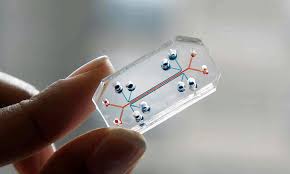Revolutionary Robotic Surgery Device Promises Unparalleled Precision in Retinal Procedures
Performing surgery on the retina—one of the most delicate and intricate parts of the human body—demands extraordinary precision. Even the most skilled surgeons must contend with challenges like a patient’s breathing, involuntary eye movements, and their own natural hand tremors. Given that the retina is only a fraction of a millimeter thick, the margin for error is razor-thin.
Now, researchers at the University of Utah’s John A. Moran Eye Center and the John and Marcia Price College of Engineering have developed a groundbreaking robotic surgery device designed to give surgeons what they describe as “superhuman” precision.
A Game-Changing Innovation
This cutting-edge robotic system operates with remarkable accuracy, executing movements as small as 1 micrometer—even smaller than a human cell. Mounted securely onto the patient’s head using a specialized helmet, the device stabilizes the eye by counteracting subtle head movements. Additionally, it incorporates a haptic interface, a handheld robotic tool that translates the surgeon’s hand motions into highly refined movements, minimizing tremors and ensuring extreme precision.
Currently in the testing phase, this robotic assistant is expected to revolutionize retinal surgery by enabling safer, more effective treatments—especially for advanced procedures such as gene therapy for inherited retinal diseases.
Testing and Breakthrough Results
To evaluate its effectiveness, researchers conducted trials using enucleated pig eyes, publishing their findings in Science Robotics. The study was spearheaded by Jake Abbott, Professor of Mechanical Engineering at the University of Utah, alongside Dr. Paul S. Bernstein, a renowned retinal specialist at the Moran Eye Center.
The results were promising. Surgeons performing subretinal injections—a complex procedure that involves delivering medication between two fragile, submillimeter-thin cell layers—achieved higher success rates and fewer complications with robotic assistance than with manual techniques.
According to co-author Dr. Eileen Hwang, another leading retinal surgeon at the Moran Eye Center, this device could eliminate the need for general anesthesia in certain retinal procedures.
“With the head-mounted design, we may soon perform subretinal injections under IV sedation instead of general anesthesia, allowing for faster recovery and improved safety for many patients,” Hwang explained.
Bridging Medicine and Technology
Beyond its technical advancements, the project underscores the power of interdisciplinary collaboration. As the robotic system progresses toward clinical use, ongoing partnerships between engineers, medical professionals, and researchers will continue to refine its capabilities.
“At the University of Utah, these collaborations are truly remarkable,” Bernstein said. “Whenever I have an idea, I can turn to engineers, chemists, and physicists just a few blocks away. This synergy is what makes groundbreaking innovations like this possible.”
As technology and medicine converge, this robotic surgery device could mark a new era in precision retinal procedures—one where vision-saving treatments are not just possible but more effective and accessible than ever before.








